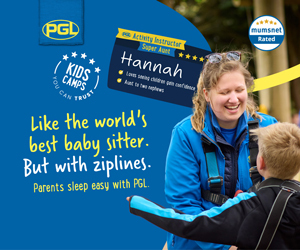Primary Times - the definitive what’s on and where to go family guide of activities and events for children of primary school age. Things to do with your kids during the school holidays including arts and craft activities, music and theatre for children, parties, competitions, days out, and family attractions along with term time drama schools, dance classes, after school clubs and sports activities. Things to do at a place near you!
Marketing Tips | March
TIP 3 Be true to your brand
If your brand is about delivering exceptional experiences for families, make sure this is what you’re doing – every time and with every customer. It needs to be at the core of every customer communication and touchpoint. Your staff need to understand and deliver this brand promise too.
Stay true to your brand
What is a brand? Ultimately a brand is a perception that exists in you’re the mind of your customer. Ask yourself why you pick a brand of shampoo over a supermarket own brand shampoo?
It’s that tiny voice in your subconscious telling you that you might have hair as lustrous as Cheryl (whatever you think of Cheryl, she does have amazing hair!)
Strip the packaging and advertising away, the two shampoos are broadly the same - they probably contain the same ingredients. But one carries a perception that your hair will be glossier, shinier or whatever the brand perception is. And that’s why you pay more for the brand. Even though you know that your hair probably won’t look like Cheryl’s, you still pick the branded shampoo. Your rational mind knows lustrous hair is more about genetics and diet, but that's the power of branding. It can silence your rational brain.
What makes up a brand?
A great analogy for a brand is to think of it like an iceberg. The physical aspects that you can see (logo, colour palette, website, advertising) sit above the waterline. However, a whole host of brand attributes sit below the waterline: people, skills, values, culture, customer experience and business processes, to name a few.
A brand isn’t just your logo or tagline, and it’s not what your marketing team says it is. It’s what the customer perceives it to be (as in our shampoo example).
Putting it into practice
Thinking about this for clients of Primary Times, imagine your brand is about giving families a fun and memorable day out. This is your brand promise. And this promise needs to be delivered at every touchpoint a customer has with you, from your advert through to visiting you and experiencing your service.
Their very first experience with you (from visiting your website to book their tickets through to leaving the car park) needs to be exceptional. If when they arrive, Brenda on the gate is having a bad day and is grumpy when issuing tickets, or the toilets are unclean, or the food is overpriced and mediocre – the family will have a very different brand experience to the one you want them to have.
You need to look at your ‘iceberg’ and fix the areas that let you down. Look at staff training and how well they understand the brand promise, are they the right people to deliver it? Likewise, how often are the facilities cleaned throughout the day?
How do you ensure your customers believe your brand promise?
It’s straightforward, ask them. It’s easy to set up a simple survey using SurveyMonkey, or you could ask people to complete a short survey as they leave the venue (although be careful not to take too much time as this could annoy visitors who want to get tired children home!)
If you’re going down the survey route, it’s best to ask questions rooted in the attributes you believe your brand to have. A good example of this for the visitor attraction would be:
- On a scale of 1-5, where 1 is strongly disagree and 5 is strongly agree, rate how much you agree with the following statement: [brand name] delivers a fun and memorable day out for the whole family.
- Do you plan on returning to [brand name]? Yes or No. Please give your reasons
- What could we do better?
Use the insight to improve customer’s perceptions of your brand
You may find there are consistent themes are coming out in the ‘what can we do better’ question. This means you can do something to improve these areas. It’s important to share the insights with the rest of the team. If friendliness of staff is an issue perhaps HR need to look at how they are recruiting and inducting staff into the organisation. Do they understand and share the brand values?
It’s important to remember that you can only change your customer’s perception of your brand by addressing the whole of the iceberg. A rebrand or a new website won’t solve any negative brand associations your customers have if they have a poor visitor experience.



